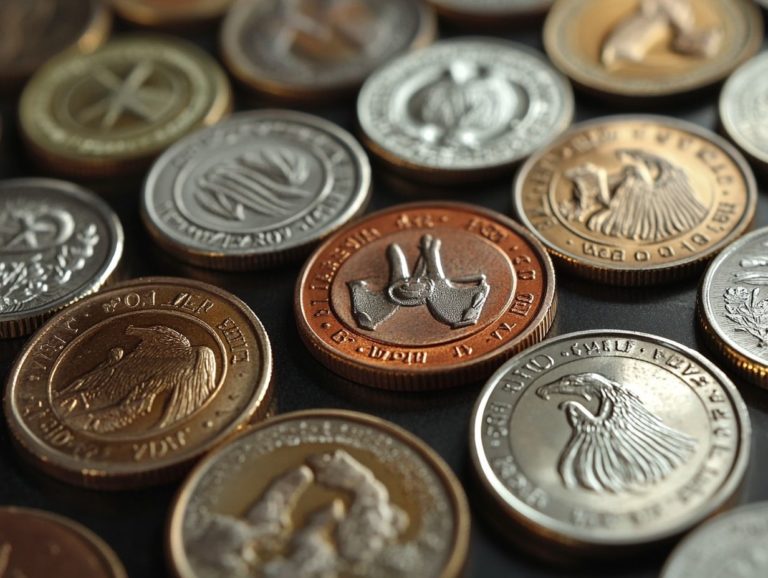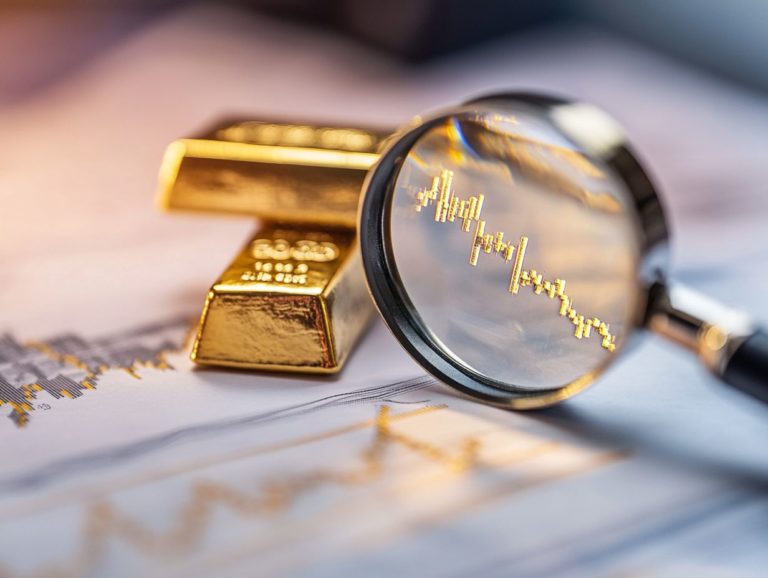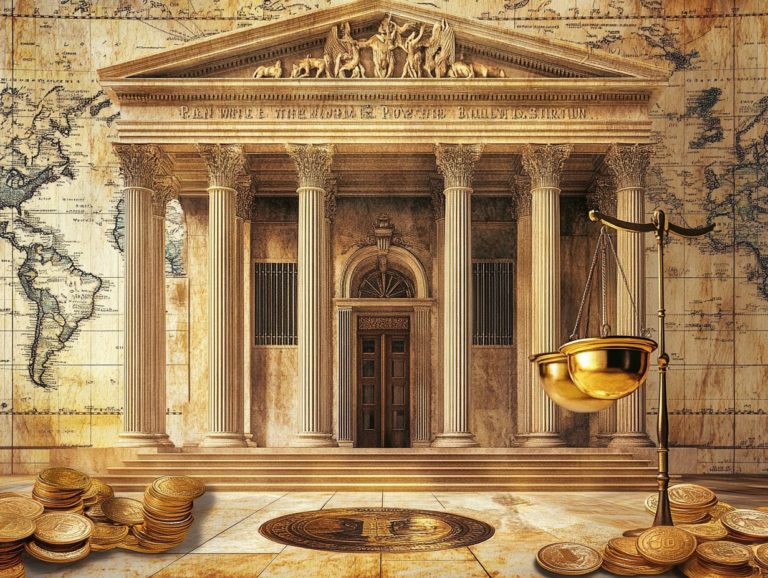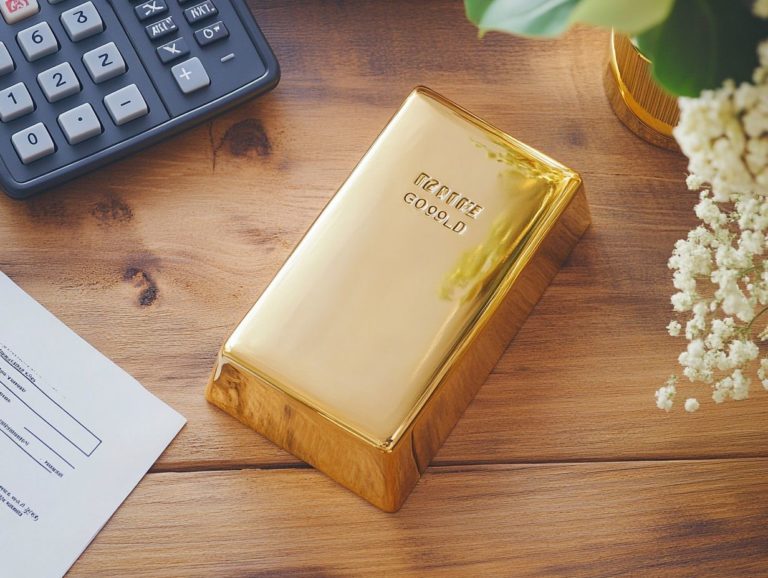How to Assess Precious Metal Purity?
Understanding the purity of precious metals is essential for anyone who engages in buying, selling, or investing in these invaluable resources. Purity influences market value and determines the integrity of the material itself.
This guide delves into various methods for assessing precious metal purity, including acid testing, X-ray fluorescence, and fire assays. It also addresses factors that can impact purity results, how to interpret these findings, and best practices for ensuring accuracy in your assessments.
Whether you’re a seasoned trader or just starting out, this information will empower you to make informed decisions in your precious metals journey.
Contents
- Key Takeaways:
- The Importance of Assessing Precious Metal Purity
- Methods of Assessing Purity
- Factors Affecting Purity Assessment
- Interpreting Purity Results
- Ensuring Accuracy in Purity Assessment
- Frequently Asked Questions
- 1. How do I assess the purity of precious metals?
- 2. Can I use a magnet to test the purity of precious metals?
- 3. What is the most reliable method for assessing precious metal purity?
- 4. Are electronic testers accurate for assessing precious metal purity?
- 5. How can I ensure the accuracy of my purity assessment?
- 6. Is it possible for a precious metal to be 100% pure?
Key Takeaways:
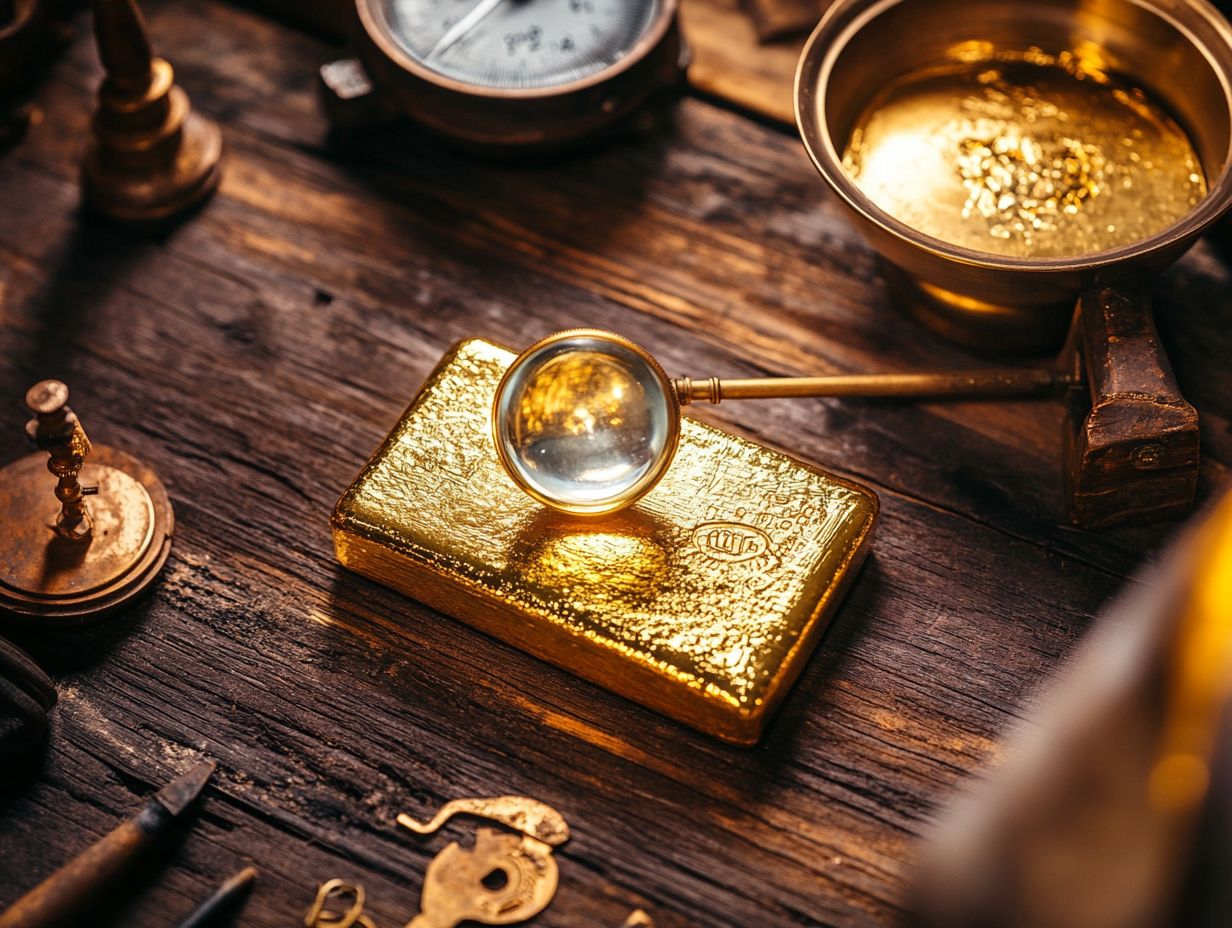
- Assessing the purity of precious metals is crucial as it determines their value and authenticity.
- Common methods for assessing purity include acid testing, XRF analysis, and fire assay.
- Accuracy in purity assessment can be affected by surface contamination and the composition of the alloy.
The Importance of Assessing Precious Metal Purity
Understanding the purity of precious metals is vital for a range of applications, from jewelry testing and selling gold scrap to ensuring precise jewelry appraisal. The purity assessment of metals such as gold, silver, and platinum group metals directly influences their market value and desirability.
Accurate measurements are essential for both consumers and industry professionals. Methods like X-ray Fluorescence (XRF), a method that uses X-rays to analyze materials, and acid testing provide reliable means to determine purity levels. Furthermore, methods that don’t damage the item allow for the analysis of alloy composition without harming the item. For those investing in precious metals, understanding strategies for minimizing taxes on gains is also crucial.
Why is Purity Important?
Purity is paramount in the world of gold and silver analysis, as it directly impacts both the market value and authenticity of the precious metals used in jewelry and various other applications. These assessments can protect you from costly mistakes act now to ensure you’re making wise investments!
When evaluating these materials, the precise composition dictates financial worth and the product’s trustworthiness. You depend heavily on accurate testing methods to ensure you’re receiving exactly what you re paying for.
Tools like acid tests and electronic testers are essential, offering a dependable way to verify purity levels. By utilizing these methodologies, sellers can enhance consumer confidence, secure in the knowledge that their products adhere to industry standards.
An accurate assessment protects against overpricing and encourages fair trade practices, ultimately benefiting both buyers and sellers in this dynamic marketplace.
Methods of Assessing Purity
You have a range of methods at your disposal for assessing the purity of precious metals. Each presents distinct advantages tailored for various applications.
Unlock the secrets of your precious metals with powerful techniques like X-ray Fluorescence (XRF) and acid testing. These methods all play crucial roles in ensuring precise jewelry testing and analyzing alloy compositions. With these tools, you can confidently evaluate the quality and authenticity of your materials, while also being aware of the IRS guidelines on precious metals investments.
Acid Testing
Acid testing stands as a time-honored and dependable method for determining the purity of precious metals. By employing specific acids, such as nitric acid and hydrochloric acid, this technique elicits reactions that unveil the true composition of the metal.
This approach offers invaluable insight into the quality of the metal, essential for jewelers and traders who must verify the authenticity of items before proceeding with transactions. When testing gold, nitric acid typically dissolves other metals like copper and silver, leaving behind only pure gold if it’s present. Additionally, it’s important to be aware of the tax implications of selling precious metals to a dealer to ensure compliance and informed decision-making.
In a similar vein, silver can be examined using a blend of nitric and hydrochloric acids, which react in distinct ways, allowing for a clear differentiation between high and low purity levels.
By grasping these chemical reactions, you can confidently assess the value of your assets in an industry where precision is not merely important; it s absolutely critical.
X-Ray Fluorescence (XRF) Analysis
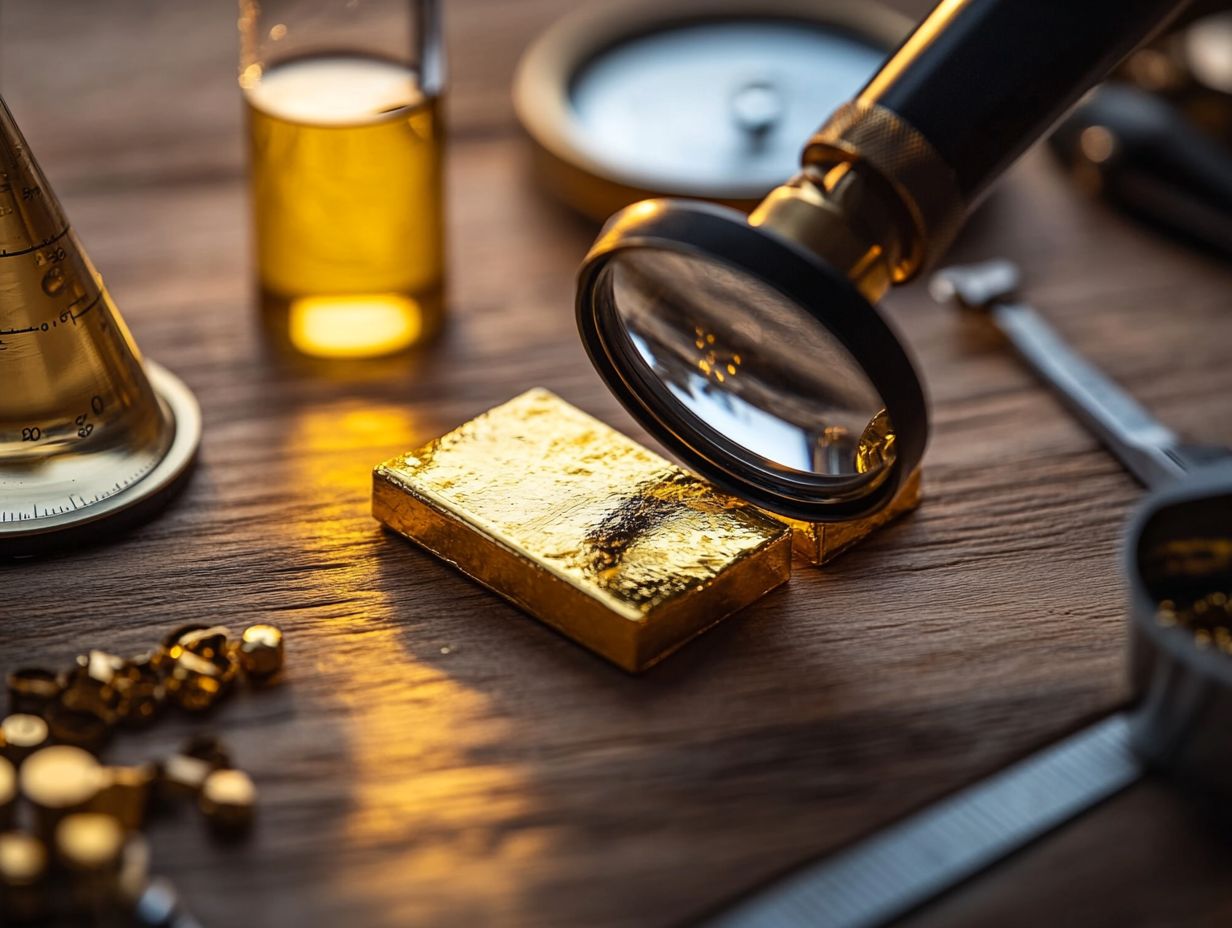
X-ray Fluorescence (XRF) analysis is a highly advanced technique for non-destructive testing of precious metals. It offers rapid measurements and intricate alloy composition analyses, making it invaluable for jewelry testing.
This method uses X-ray radiation to interact with materials, emitting secondary X-rays unique to each element. Unlike traditional methods that sacrifice a sample and take a long time, XRF provides results in minutes!
Its portability adds convenience! You can use portable XRF devices, like those from Bruker, to evaluate gold and silver purity right on-site.
This capability streamlines your workflow as a jeweler or refiner, allowing for quick, informed decisions based on reliable data.
Fire Assay
Fire Assay is one of the most accurate methods for determining the purity of precious metals, especially gold and silver. This technique provides crucial insights for jewelry appraisal and investment decisions.
This time-honored method mixes your sample with flux and subjects it to extreme heat in a furnace. The intense heat separates metals from impurities, a process valued for thousands of years!
While methods like X-ray fluorescence and atomic absorption spectroscopy may be faster, Fire Assay remains the gold standard due to its unmatched accuracy. For anyone serious about investment integrity, this technique is critical.
Factors Affecting Purity Assessment
Several factors can influence the accuracy of purity assessments. Key elements include surface contamination and the specific composition of the alloy.
For professionals testing gold and silver jewelry, it s essential to consider these factors carefully.
Surface Contamination
Surface contamination can impact purity assessment outcomes. Misinterpretations in gold purity and silver analysis may result from this contamination.
Contamination can come from oils on your skin, dust, or residues from previous tests. These elements can interfere with sensitive measuring techniques used in jewelry testing.
For instance, foreign substances can distort readings in X-ray fluorescence or acid testing. This distortion can lead to misleading conclusions about a piece s authenticity and quality.
To ensure reliable results, maintain a pristine testing environment. Implement rigorous cleanliness protocols for accurate information about valuable assets.
Composition of Alloy
The composition of the alloy is crucial in determining the purity of precious metals. Even slight variations in metal ratios can affect purity levels in gold and silver assessments.
These variations influence numerical purity grading and the overall chemical behavior during testing. For example, trace metals like copper or palladium can alter the sample’s response to analytical techniques, introducing potential inaccuracies.
Understanding how these compositions interact is vital for professionals in the field. This knowledge directly impacts the reliability of results, from investment assessments to jewelry valuation.
Analyzing alloy compositions meticulously is key to maintaining high testing standards, especially when considering the tax implications of holding precious metals as assets.
Interpreting Purity Results
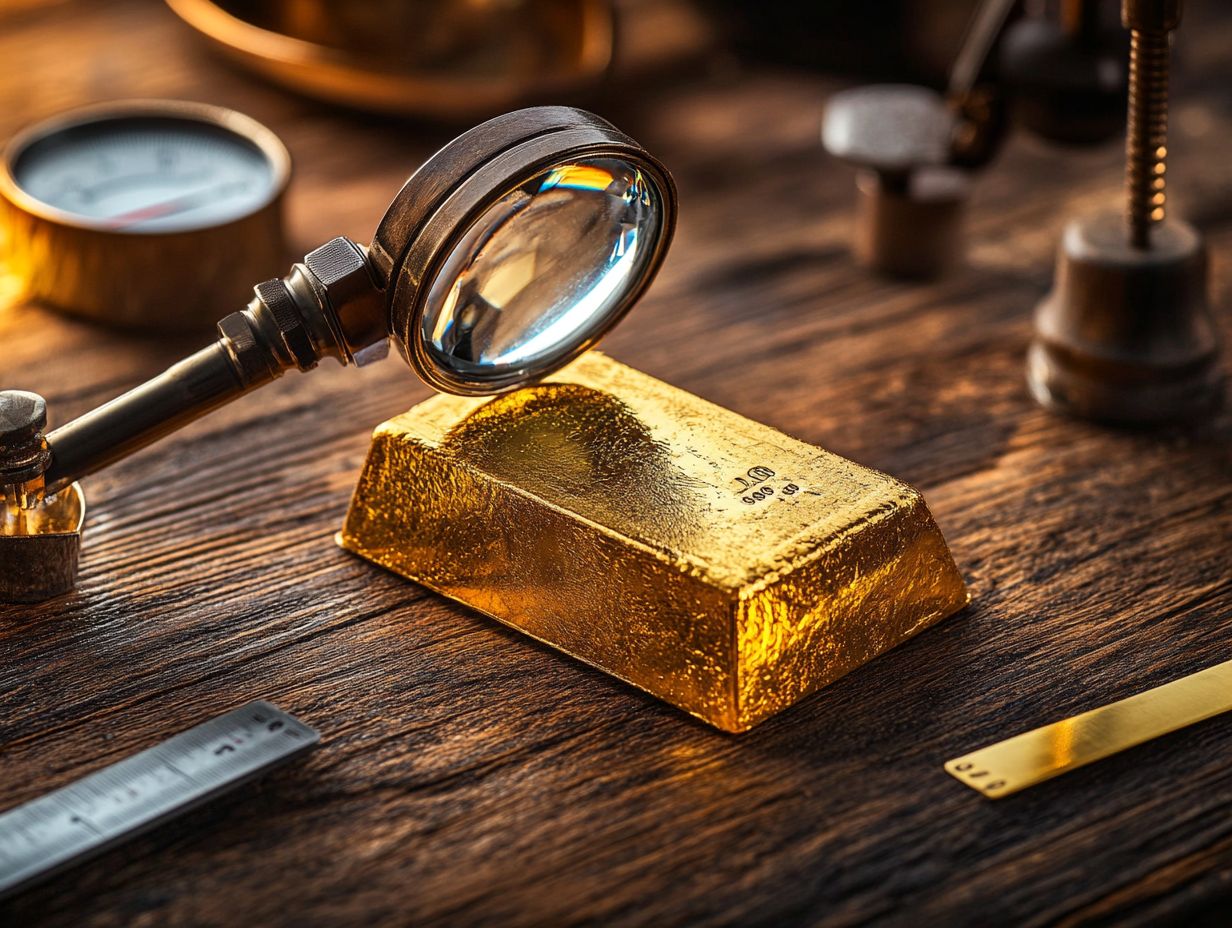
Interpreting purity results is essential for evaluating precious metals. By understanding purity measurements, you can make informed decisions in jewelry testing, gold purity evaluation, and silver analysis. This knowledge enhances your expertise and elevates your credibility in the field.
Understanding Purity Measurements
Purity measurements for precious metals are typically expressed in karats for gold and as percentages for silver. Gold is measured in karats, with 24K being pure gold. Silver is often measured as a percentage, like .925, meaning it is 92.5% pure silver. Knowing these systems helps you compare quality easily and make informed purchasing decisions.
Grasping these systems is crucial for both buyers and sellers, as they directly influence the value and desirability of the jewelry or investment you re considering.
Ensuring Accuracy in Purity Assessment
Accuracy in purity assessment is critical. Implementing practices like instrument calibration boosts the reliability of your results. This is especially important when using multiple verification methods.
Calibration and Quality Control
Calibration and quality control are vital for effective jewelry testing. They ensure your instruments yield precise and accurate results. Calibration means adjusting tools to ensure they give correct measurements.
These procedures require you to systematically check and adjust your testing equipment, minimizing errors during analysis. If you’re in the jewelry industry, understanding this process is essential; it impacts the credibility of your appraisals. Regular calibration involves using standardized reference materials to maintain accuracy.
Implementing quality control measures, such as routine checks and audits, safeguards the integrity of your testing. This ensures discrepancies are swiftly identified and corrected. By taking this holistic approach, you build trust in the results, reinforcing the reliability of your jewelry testing processes.
Using Multiple Methods for Verification
Using different testing methods improves accuracy and confidence in results related to gold purity and silver analysis. This approach allows you to cross-verify findings, confirming each piece’s authenticity.
Integrating techniques like X-ray fluorescence, acid testing, and specific gravity measurements gives you a comprehensive understanding of the metal composition. The synergy of these methods reduces the risk of misidentification and elevates consumer trust. Additionally, it’s important to consider the tax implications of precious metals gifts when making transactions.
In an industry where precious metal values can fluctuate, relying on combined assessments fosters a more dependable evaluation. Ultimately, this benefits both sellers and buyers by facilitating more transparent transactions.
Frequently Asked Questions
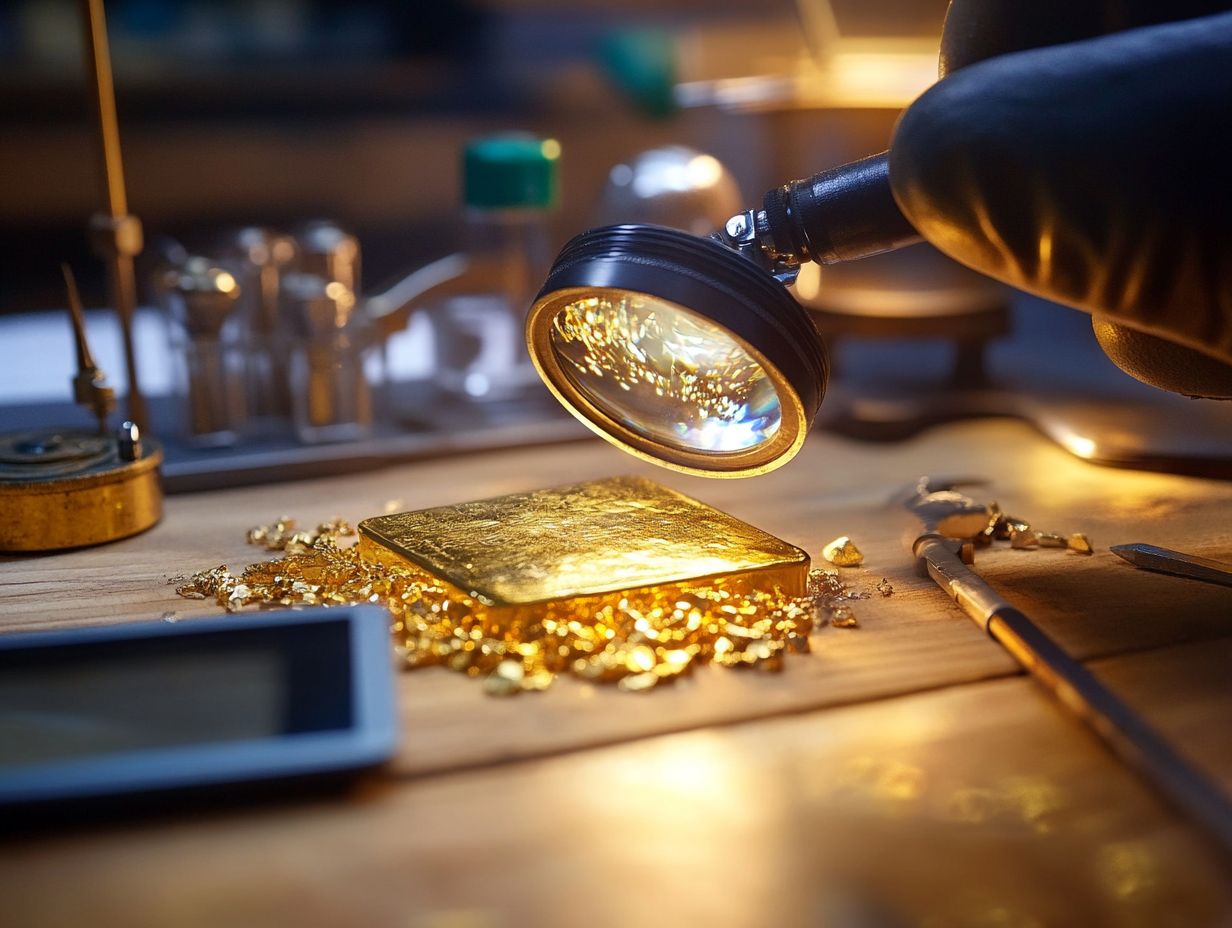
1. How do I assess the purity of precious metals?
You can assess purity through chemical tests, electronic testers, or physical tests like measuring weight and density.
2. Can I use a magnet to test the purity of precious metals?
No, using a magnet is not an accurate way to assess purity. While some precious metals may show slight magnetic properties, this is not a reliable indicator of purity.
3. What is the most reliable method for assessing precious metal purity?
The most reliable method for assessing precious metal purity is testing with chemicals. This involves using acids (substances that can dissolve metals) to determine the metal’s composition.
4. Are electronic testers accurate for assessing precious metal purity?
Electronic testers offer a quick way to check purity, but they aren’t always precise. It’s best to use multiple methods to confirm the purity of these metals.
5. How can I ensure the accuracy of my purity assessment?
Use trusted methods and tools to check purity accurately. Always confirm purity through several tests; it’s crucial to avoid costly mistakes!
6. Is it possible for a precious metal to be 100% pure?
It is technically possible for a precious metal to be 100% pure, but it’s very rare. Most precious metals, like gold and silver, often contain trace elements and impurities. This is why precise testing methods are essential to determine their purity.










